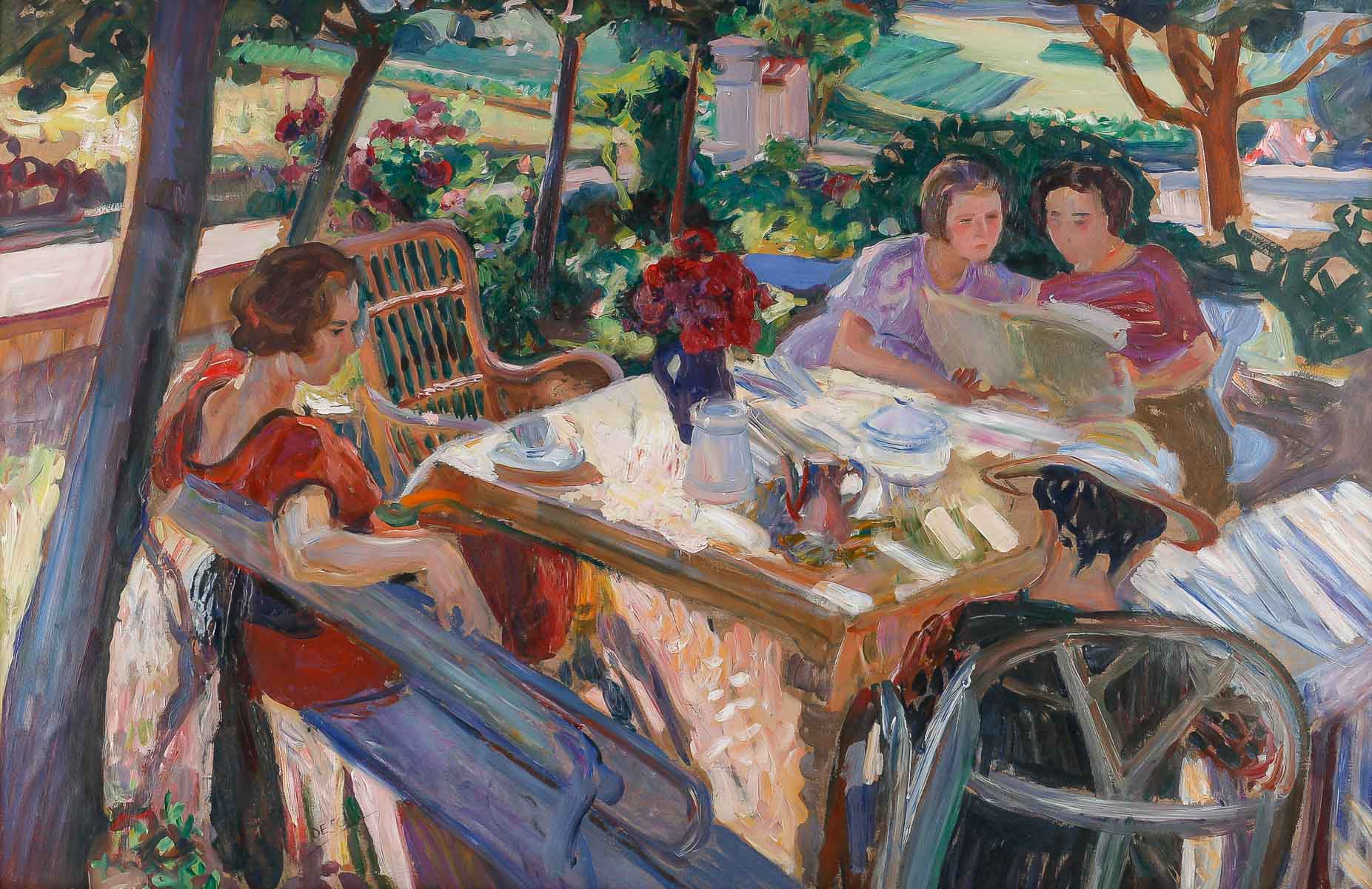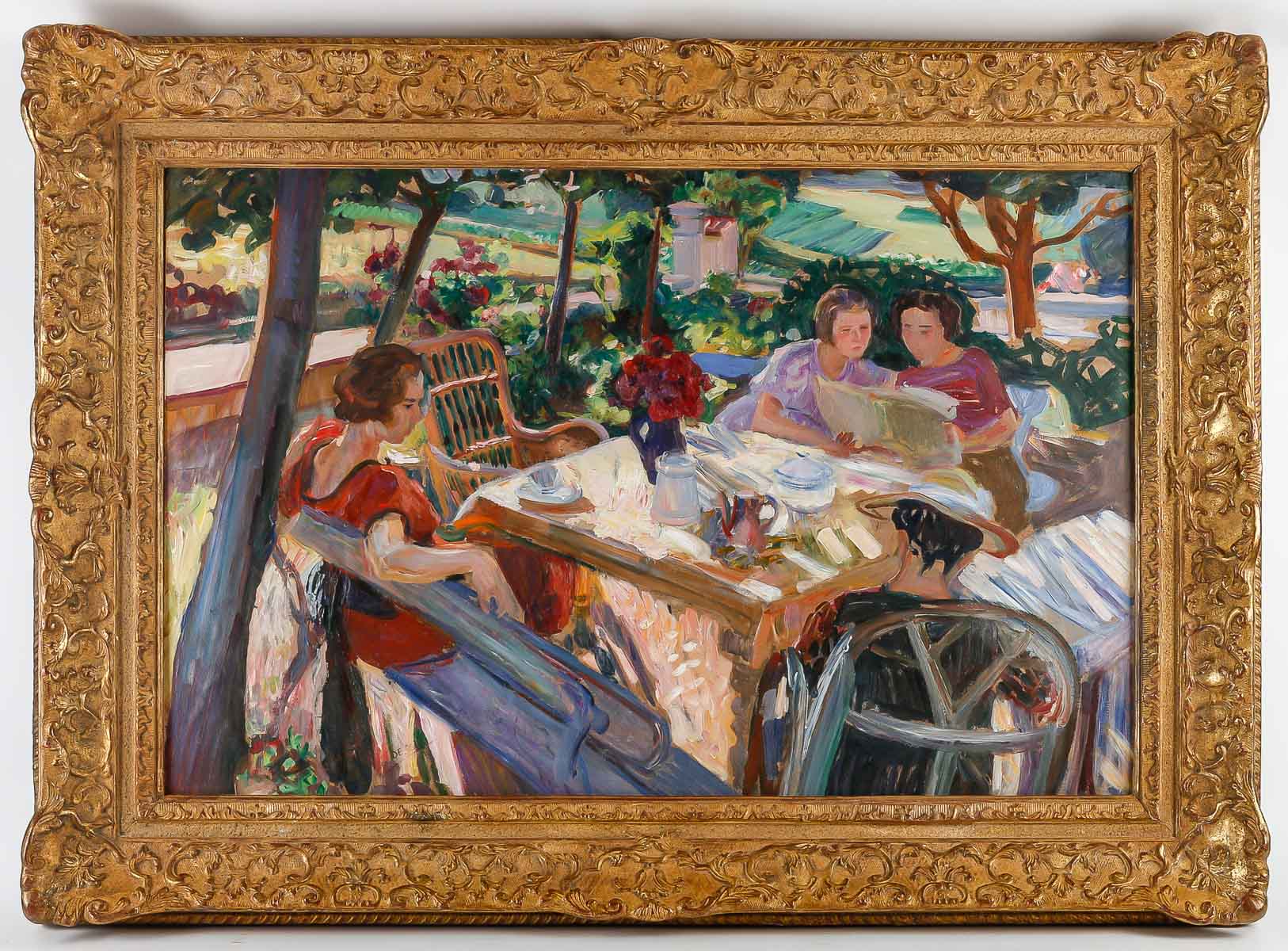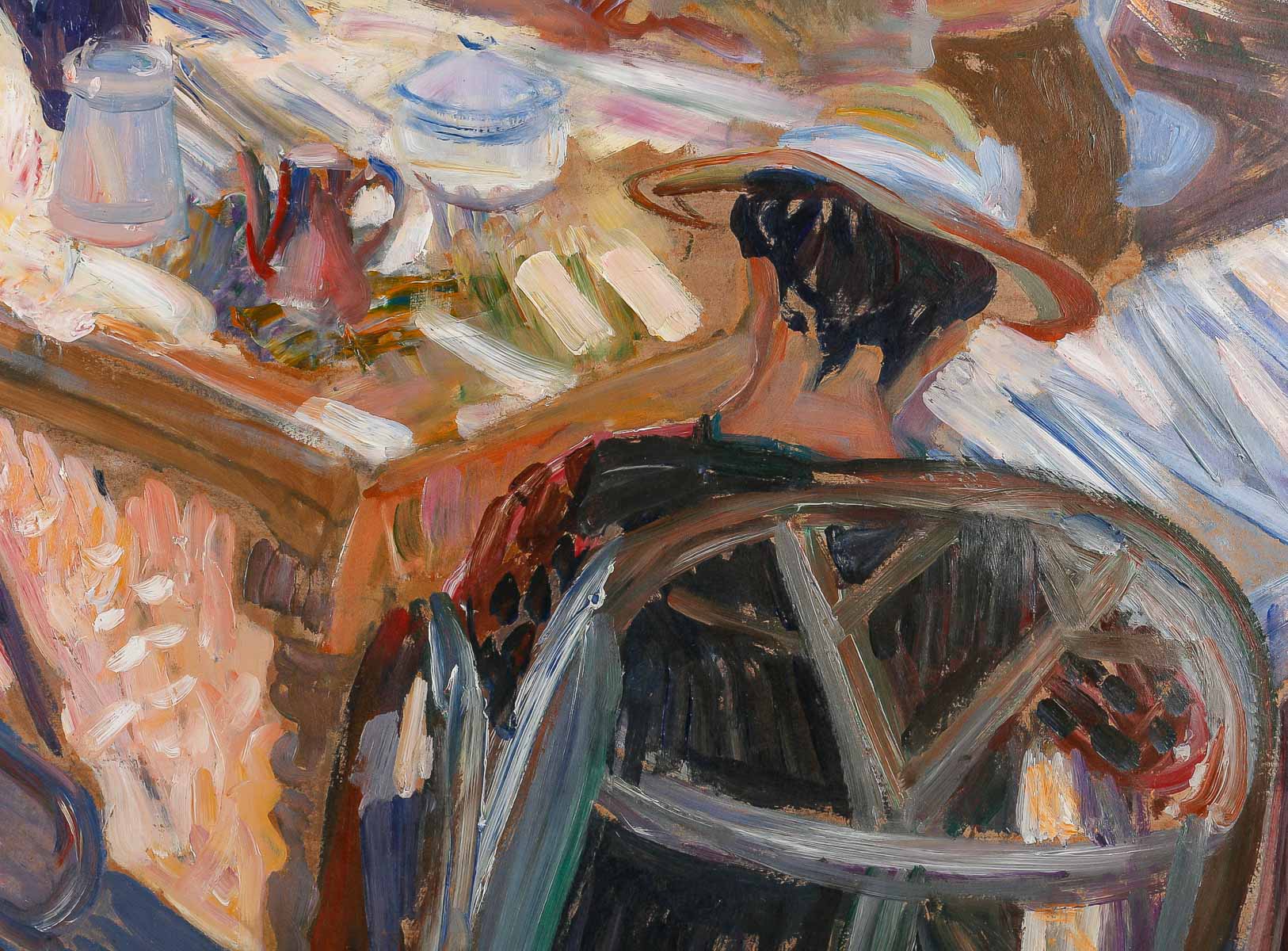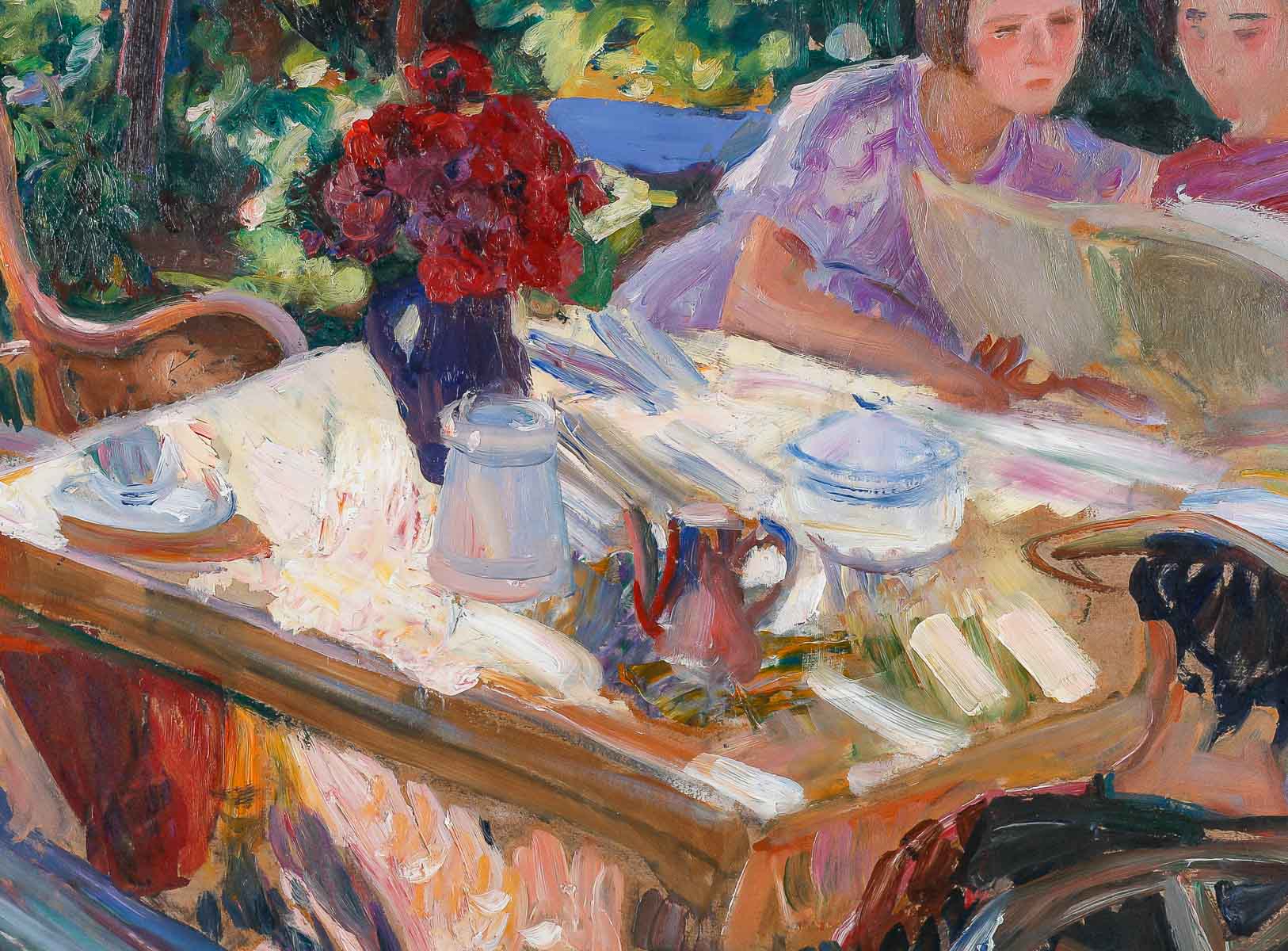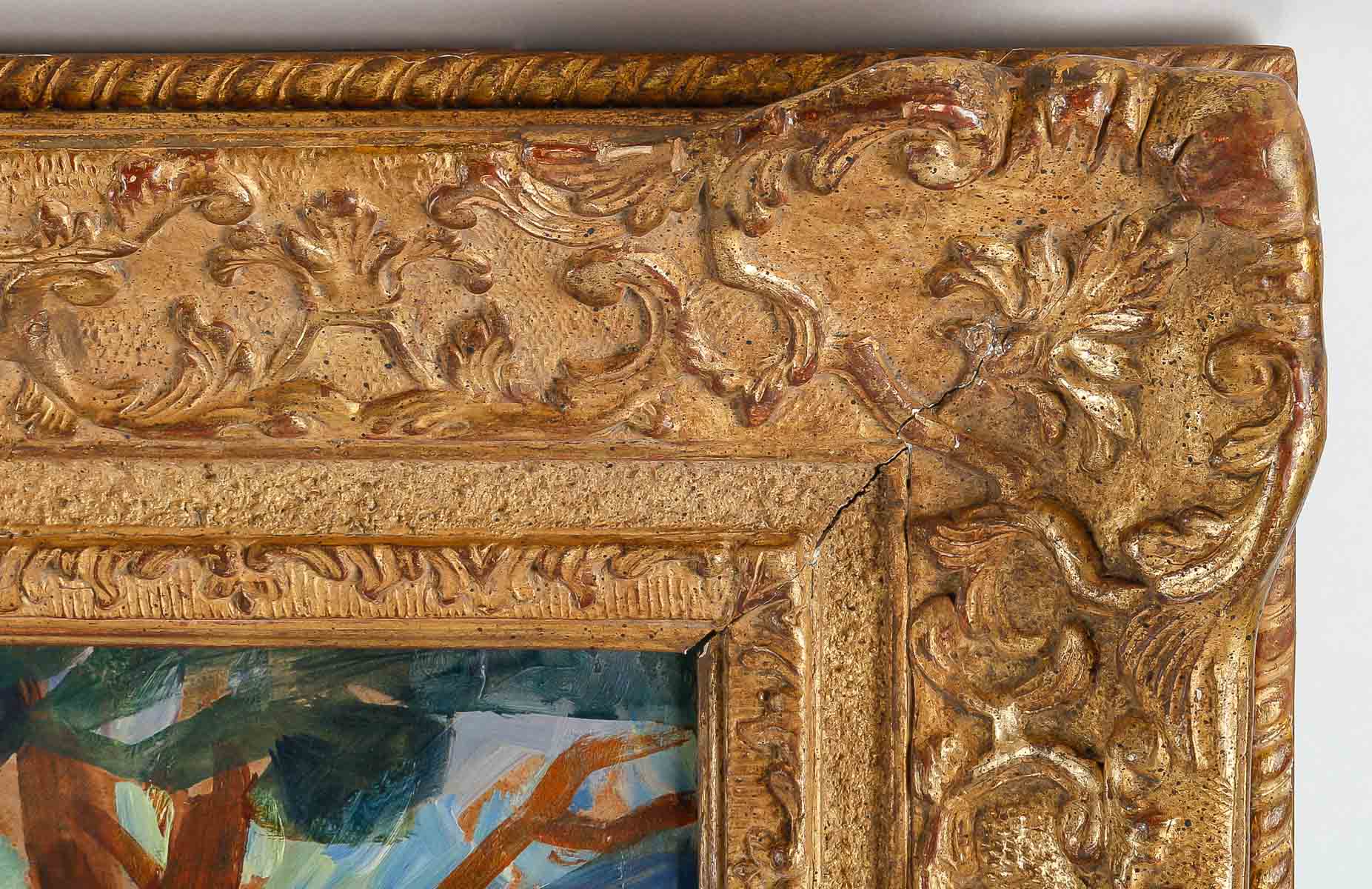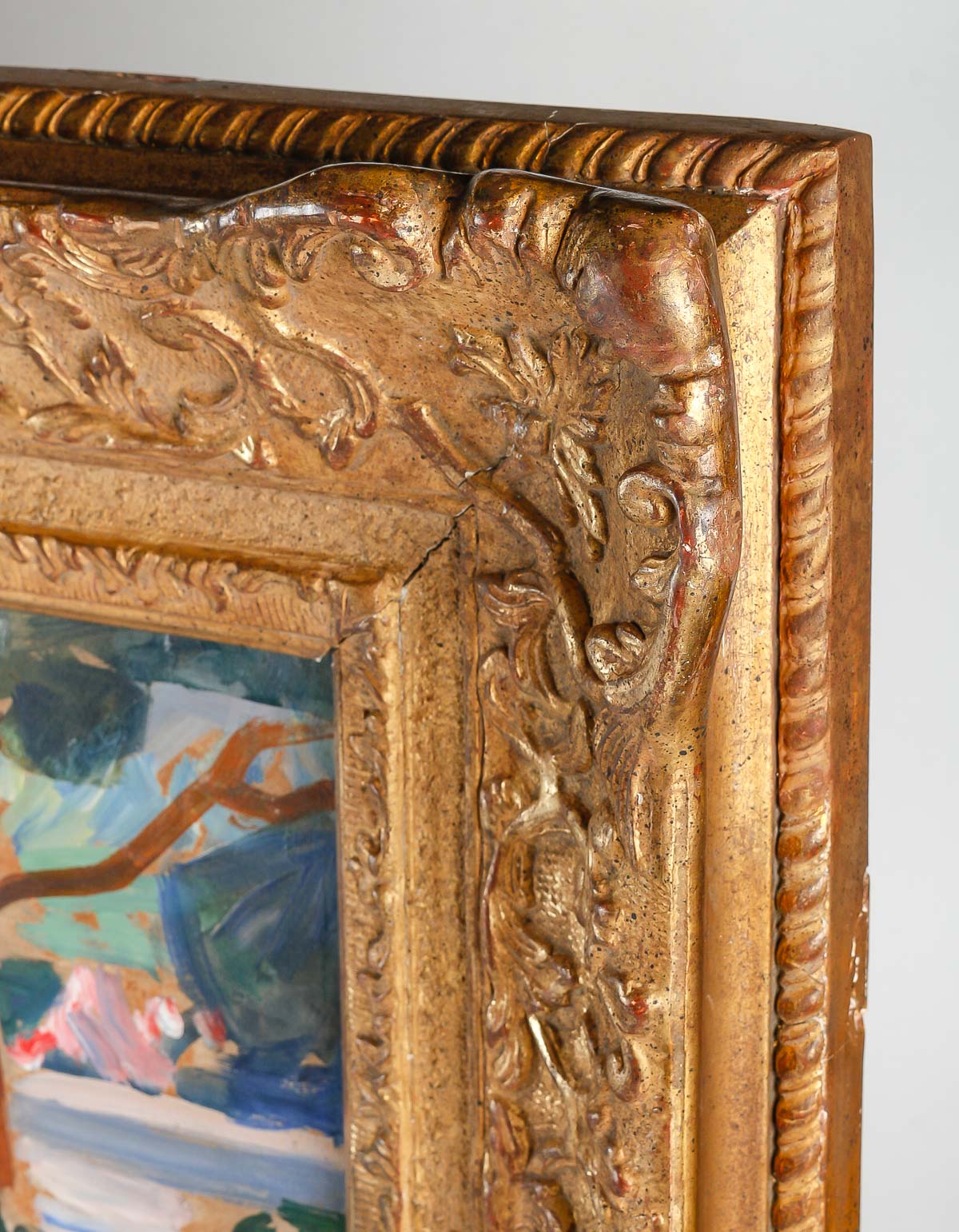Auguste-Théodore DESCH (1877 – 1924)
A colorful, lively and peaceful scene of summer life by Lorraine painter Auguste, Théodore Desch, circa 1920.
Oil on cardboard
Signed bottom left
Dimensions: 58 x 84 cm
With frame: 77 x 106 cm
sold
Auguste Théodore Desch, a well-known and appreciated Lorraine artist whose works are inspired by scenes of daily and family life.
“Very colorful, almost fauvist sketches, pastels reminiscent of Toulouse-Lautrec. A central theme, abundantly expressed: daily and family life”. – Gérald Schurr
Auguste Théodore Desch draws his inspiration from everyday life and manages to sublimate it with talent. It’s on a sunny terrace surrounded by vegetation that the painter invites us to enjoy the sunny days. The atmosphere is relaxed and peaceful. We’d love to be part of the table. The surrounding landscape is contrasting and resplendent.
Auguste Théodore Desch, a colorist of great subtlety with a strong, powerful touch.
“Desch’s coloring! What a marvel of power, finesse and variety! Desch is an artist as fertile as he is subtle.” – Pol Simon
Our painting testifies to his skill with color.
His strong, powerful touch is distinctly post-Impressionist.
Biography
Auguste Desch, a French painter and engraver born in Nancy, was both a portraitist and painter of genre scenes. He studied with Jules Larcher at the École des Beaux-Arts in Nancy, then with Léon Bonnat at the École Nationale Supérieure des Beaux-Arts in Paris.
His submissions to the Salon des artistes français were noticed: he was awarded a third-class medal in 1906; in 1908, he presented a large-scale painting depicting “Abisag devant le Roi David” (Abisag before King David), in which the influence of the École can be felt in both the composition and the choice of subject. At the 1909 Salon, with his painting L’enfant à la crinoline, Auguste Desch completely renewed his style, resolutely breaking with academicism. L’enfant à la crinoline was exhibited at the Panama-Pacific International Exposition in San Francisco in 1915.
He wins a travel grant to study in Italy and the Tyrol, where he creates the drawings that will be part of a solo exhibition at the Galerie Georges Petit on his return.
During the First World War: with the discovery of camouflage painting by Louis Guingot, an artist from the École de Nancy, and Eugène J.B. Corbin, the art of camouflage became a military discipline in its own right. The creation of camouflage sections enabled many artists who were not professionally destined for a particular role in the war to use their talent in the service of France. This was the case for Lucien-Victor Guirand de Scevola, André Dunoyer de Segonzac, Jean-Louis Forain, Henri Royer and Auguste Desch, the latter leading the camouflage team based at the Toul arsenal.
Auguste Desch then moved to Lorraine, settling in Laxou.
Auguste Desch, a friend of Jacques Majorelle, Victor Prouvé and art patron Eugène J.B. Corbin, was the most fortunate to be integrated into the École de Nancy sphere. He has kept his place in the circle of recognized Lorraine artists.
Auguste Desch died in Laxou (where a street now bears his name) in 1924, and is buried in Nancy’s Préville cemetery.
The Musée de l’école de Nancy has several of his violently colored sketches and a pastel worthy of Toulouse Lautrec (“Préparatif du bal”), while the Musée des Beaux-arts has a 1906 maternity and several canvases of beach and seaside animated by silhouettes in fauve patches.
Museums
– Épinal, Musée départemental des Vosges: Le Ponton, oil on canvas.
– Nancy, Musée des Beaux-Arts ; Musée de l’École de Nancy :
– Rouen, Musée des Beaux-Arts
Solo exhibitions
– Galerie Georges Petit, Paris, circa 1911.
Group exhibitions
– Salon de Nancy, from 1896.
– Salon des artistes français, member of the Society in 1901.
– 1915 World’s Fair, San Francisco.
– Impressionism in Lorraine, Musée des Beaux-Arts de Nancy, 1975.
Bibliography
-Etienne Prouvé and Sylvie Teitgen “Auguste-Théodore DESCH” 2003
Harcos “Painters and engravers of Lorraine
– Gérald Schurr, Les petits maîtres de la peinture, valeur de demain, tome 2, Les éditions de l’amateur, 1982.
– Ladislas Harcos, Peintres et graveurs lorrains, 1833-1980, Éditions Harcos, 1991.
– Gérald Schurr, Le guidargus de la peinture, Les éditions de l’amateur, 1996.
– André Roussard, Dictionnaire des peintres à Montmartre, Éditions André Roussard, 1999.
– Emmanuel Bénézit, Dictionnaire des peintres, sculpteurs, dessinateurs et graveurs, Gründ, 1999.
– Véronique Menault-Mirande (preface by André Rossinot), Auguste-Théodore Desch (1877-1924), Nancy, Impressions Publilor, 2003.
– Georges Sadoul, “Mort du peintre Auguste Desch”, Le Pays lorrain, no. 212, August 1924.
– R.-L. Martin (ed.), “En souvenir d’Auguste Desch”, Le Pays lorrain, no. 213, September 1924.
– Colette Bardin, Auguste Desch retrouvé, Master’s thesis in art history, Université Nancy II, 1971.
Sources :
http://artlorrain.com/auguste-théodore-desch
https://fr.wikipedia.org/wiki/Auguste_Desch#Vente_publique

